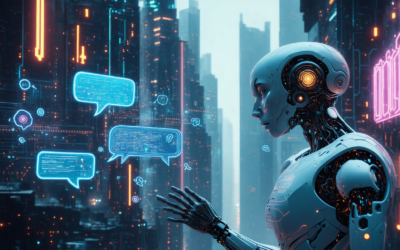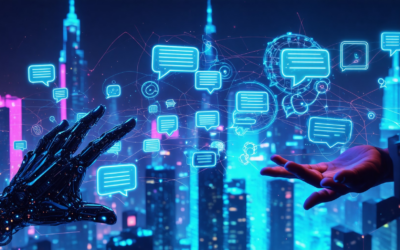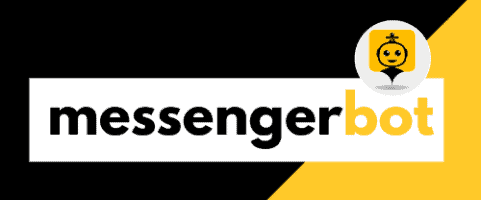Navigating the ever-evolving landscape of customer interactions can be a daunting task for businesses seeking to deliver exceptional experiences. However, with the advent of AI-powered chatbots, companies now have a powerful tool to streamline and enhance the customer journey from start to finish. By seamlessly integrating chatbots into their customer service strategies, organizations can unlock new levels of efficiency, personalization, and convenience, ultimately fostering stronger relationships with their valued clientele. This comprehensive guide delves into the intricate world of chatbot customer journeys, exploring the fundamental steps to map and optimize these AI-driven interactions, the myriad ways chatbots can elevate customer experiences, and the strategies to craft a cohesive chatbot implementation plan that aligns with your business goals.
I. What are the 7 steps to map the customer journey?
Mapping the customer journey is a crucial process for businesses to understand and enhance the experiences of their customers. By visualizing and analyzing the various touchpoints and interactions a customer has with a brand, companies can identify areas for improvement, streamline processes, and deliver exceptional service. Here are the seven essential steps to effectively map the customer journey:
A. Chatbot customer journey template
To ensure a seamless and personalized customer experience, it’s essential to have a well-designed chatbot customer journey template. This template serves as a framework for mapping out the various stages and touchpoints where customers interact with your chatbot. By carefully crafting this journey, you can anticipate their needs, address potential pain points, and provide proactive support, ultimately enhancing customer satisfaction and loyalty.
A typical chatbot customer journey template may include the following stages:
- Initial Greeting and Onboarding: This is the first impression your chatbot makes, so it’s crucial to have a warm and inviting welcome message that sets the tone for the interaction.
- Intent Identification: Your chatbot should be able to quickly understand the customer’s intent, whether it’s making a purchase, seeking support, or gathering information.
- Information Gathering: Depending on the identified intent, your chatbot should ask relevant questions to gather the necessary details to provide an accurate and personalized response.
- Solution Delivery: Based on the information gathered, your chatbot should provide the customer with the requested information, product recommendations, or troubleshooting steps.
- Follow-up and Confirmation: After delivering the solution, your chatbot should confirm if the customer’s needs have been met and offer additional assistance if required.
- Feedback Collection: Encourage customers to provide feedback on their experience with your chatbot, as this can help identify areas for improvement and ensure continuous optimization.
- Ongoing Engagement: Depending on the customer’s needs, your chatbot can suggest related products, services, or resources to maintain engagement and foster a long-term relationship.
By following this template and customizing it to your specific business needs, you can create a seamless and intuitive chatbot customer journey that delights your customers and sets your brand apart from the competition.
B. Chatbot customer journey examples
To better understand how chatbot customer journeys can be implemented, let’s explore a few real-world examples:
- E-commerce Chatbot Journey: A customer visits an online clothing store’s website and is greeted by a chatbot. The chatbot assists them in finding the perfect outfit by asking about their preferences, sizes, and occasion. It then recommends products, answers questions, and facilitates the checkout process, ensuring a smooth and personalized shopping experience.
- Banking Chatbot Journey: A customer initiates a conversation with their bank’s chatbot to check their account balance. The chatbot securely authenticates the customer, retrieves their account information, and provides the requested details. It can also assist with bill payments, fund transfers, and other banking tasks, streamlining the customer’s financial management.
- Travel Chatbot Journey: A customer engages with a travel agency’s chatbot to plan their next vacation. The chatbot asks about their preferences, budget, and travel dates, and then suggests suitable destinations and packages. It can also book flights, hotels, and activities, ensuring a seamless end-to-end travel planning experience.
These examples illustrate how chatbots can enhance customer journeys across various industries by providing personalized assistance, streamlining processes, and delivering exceptional service. By mapping out these journeys and incorporating best practices, businesses can leverage the power of chatbots to create memorable and engaging customer experiences.

How is AI used in the customer journey?
Artificial Intelligence (AI) plays a pivotal role in enhancing the customer journey across various touchpoints. By leveraging AI technologies, businesses can streamline processes, personalize interactions, and deliver exceptional customer experiences throughout the entire customer lifecycle.
A. AI chatbots for customer service
Ang mga bot na pinapagana ng AI mga chatbot and virtual assistants have become invaluable tools for customer service. These intelligent systems engage with customers, answering queries and providing personalized product or service recommendations based on user data and preferences. They offer 24/7 support, quickly resolving issues and providing personalized assistance based on past interactions and purchase history.
Ang mga nangungunang tatak tulad ng Apple at Amazon have successfully implemented AI chatbots para sa serbisyo sa customer, enhancing their support experience and driving customer satisfaction.
B. AI chatbot customer service
Ang mga AI chatbot ay nagbago sa tanawin ng serbisyo sa customer, nag-aalok ng iba't ibang benepisyo na nagpapabuti sa kabuuang karanasan ng customer. Ang mga matatalinong sistemang ito ay maaaring:
- Magbigay ng agarang mga tugon at suporta 24/7, binabawasan ang oras ng paghihintay at nagpapabuti sa mga rate ng tugon.
- Humawak ng maraming katanungan mula sa mga customer nang sabay-sabay, pinapataas ang kahusayan at produktibidad.
- Mag-alok ng personalisadong tulong batay sa data ng customer, kasaysayan ng pagbili, at mga nakaraang interaksyon.
- Walang putol na itaas ang mga kumplikadong isyu sa mga ahente ng tao kapag kinakailangan.
- Suriin ang damdamin at feedback ng customer upang patuloy na mapabuti ang kalidad ng serbisyo.
Sa pamamagitan ng pagsasama ng mga AI chatbot sa kanilang mga estratehiya sa serbisyo sa customer, ang mga negosyo ay maaaring pasimplehin ang mga operasyon, bawasan ang mga gastos, at maghatid ng mga superior na karanasan sa suporta na nagtutulak ng kasiyahan at katapatan ng customer.
Ang Artipisyal na Katalinuhan (AI) ay may mahalagang papel sa pagpapahusay ng paglalakbay ng customer sa iba't ibang mga punto ng pakikipag-ugnayan:
- Kamalian: Ang mga bot na pinapagana ng AI mga chatbot at ang mga virtual assistant ay nakikipag-ugnayan sa mga potensyal na customer, sumasagot sa mga katanungan at nagbibigay ng personalisadong rekomendasyon ng produkto o serbisyo batay sa data ng gumagamit at mga kagustuhan.
- Pagsasaalang-alang: Sinasuri ng mga algorithm ng AI ang pag-uugali ng customer, mga pattern ng pag-browse, at pagsusuri ng damdamin upang maihatid ang mga nakatuon na kampanya sa marketing, personalisadong nilalaman, at mga inaalok na akma.
- Bumili: Ang mga AI-driven na makina ng rekomendasyon ng produkto, mga dynamic na modelo ng pagpepresyo, at mga solusyon sa conversational commerce ay nagpapadali sa proseso ng pagbili, pinapataas ang mga rate ng conversion at kasiyahan ng customer.
- Serbisyo: Ang mga AI-powered na chatbot at matatalinong virtual na ahente ay nag-aalok ng suporta sa customer 24/7, mabilis na nalulutas ang mga isyu at nagbibigay ng personalisadong tulong batay sa mga nakaraang interaksyon at kasaysayan ng pagbili.
- Pagpapanatili: Sinasuri ng mga predictive model ng AI ang data ng customer upang tukuyin ang mga panganib ng pag-alis, na nagbibigay-daan sa mga proaktibong estratehiya sa pagpapanatili, mga nakatuon na programa ng katapatan, at personalisadong insentibo.
- Pagsusulong: Ang pagsusuri ng damdamin ng AI ay nagmamasid sa social media at mga online na pagsusuri, na nagbibigay-daan sa mabilis na pagtugon sa feedback ng customer, nagpapalakas ng pagsusulong ng brand, at nagpapabuti sa karanasan ng customer.
- Pagkatapos ng Pagbili: Ang mga AI-driven na predictive maintenance at mga proaktibong sistema ng suporta ay inaasahan ang mga pangangailangan ng customer, nag-aalok ng napapanahong mga update sa produkto, mga rekomendasyon sa serbisyo, at mga pagkakataon sa cross-selling/upselling.
Ang pag-optimize ng paglalakbay ng customer gamit ang AI ay kinabibilangan ng patuloy na pagkolekta ng data, pagsusuri, at pag-refine ng modelo upang maihatid ang mga hyper-personalized na karanasan, nagtutulak ng kasiyahan ng customer, katapatan, at paglago ng kita. Mga Pinagmulan: McKinsey, Salesforce, Harvard Business Review
Paano pinabubuti ng mga chatbot ang karanasan ng customer?
Bilang isang makabagong teknolohiya, ang mga chatbot ay nag-rebolusyon sa paraan ng pakikipag-ugnayan ng mga negosyo sa kanilang mga customer, nag-aalok ng isang walang putol at personalisadong karanasan na nagpapahusay sa kasiyahan at katapatan. Sa pamamagitan ng paggamit ng kapangyarihan ng artipisyal na katalinuhan, ang mga chatbot ay naging isang hindi maiiwasang tool para sa mga kumpanya na nagnanais na itaas ang kanilang suporta sa customer at maghatid ng pambihirang serbisyo.
A. Pinabubuti ng mga chatbot ang karanasan ng customer
Ang mga chatbot ay dinisenyo upang magbigay sa mga customer ng isang superior na karanasan, na tumutugon sa kanilang mga pangangailangan nang mahusay at epektibo. Narito ang ilang mga pangunahing paraan kung paano nakakatulong ang mga chatbot sa pagpapabuti ng karanasan ng customer:
- 24/7 Availability: Nag-aalok kami ng suporta sa buong oras, tinitiyak na ang mga customer ay tumatanggap ng agarang tulong, nagpapabuti sa kasiyahan at binabawasan ang oras ng paghihintay (Salesforce, 2022).
- Personalized Interactions: By leveraging customer data, our chatbots tailor conversations, recommendations, and solutions to individual preferences and needs (IBM, 2021).
- Efficient Self-Service: Our chatbots empower customers to resolve issues independently through guided conversational flows, reducing the need for human intervention (Gartner, 2023).
- Consistent Experience: We deliver standardized responses, ensuring a cohesive brand experience across all customer touchpoints (Oracle, 2022).
- Cost Optimization: Automating repetitive tasks with our chatbots leads to significant cost savings compared to human agents (Forrester Research, 2021).
- Multilingual Support: Our chatbots can converse in multiple languages, enabling us to cater to a global customer base (Chatbots Magazine, 2022).
- Continuous Learning: Our AI-powered chatbots continuously learn from interactions, improving their ability to understand and respond to customer queries over time (MIT Technology Review, 2023).
- Data-Driven Insights: Our chatbots collect valuable customer data, enabling us to identify trends, pain points, and opportunities for improvement (Harvard Business Review, 2022).
By implementing chatbots, we have witnessed a significant improvement in customer satisfaction, loyalty, and overall experience. Our customers appreciate the convenience, efficiency, and personalized support our chatbots provide, allowing us to foster stronger relationships and maintain a competitive edge in the market.
B. Chatbots and customer experience
The integration of chatbots into customer service strategies has proven to be a game-changer for businesses across various industries. These intelligent conversational agents not only streamline interactions but also enhance the overall karanasan ng customer. By leveraging advanced natural language processing (NLP) and machine learning capabilities, chatbots can understand and respond to customer inquiries with human-like accuracy, providing personalized assistance tailored to individual needs.
One of the key advantages of chatbots is their ability to handle multiple conversations simultaneously, ensuring prompt responses and minimizing wait times. This 24/7 availability and responsiveness significantly contribute to customer satisfaction, as customers no longer have to endure frustrating delays or navigate complex phone menus.
Furthermore, chatbots excel at guiding customers through self-service options, empowering them to resolve common issues independently. This not only reduces the burden on customer service teams but also fosters a sense of control and autonomy for customers, further enhancing their overall experience.
By leveraging customer data and preferences, chatbots can deliver personalized recommendations, tailored solutions, and contextually relevant information. This level of customization ensures that each customer interaction is unique and tailored to their specific needs, fostering a sense of personal connection and loyalty.
Moreover, chatbots can seamlessly integrate with various channels, such as websites, mobile apps, and social media platforms, providing a consistent and cohesive experience across all customer touchpoints. This omnichannel approach ensures a seamless transition between different communication channels, further enhancing the overall customer journey.
As chatbot technology continues to evolve, businesses are increasingly recognizing the immense potential of these intelligent agents in delivering exceptional customer experiences. By combining the efficiency of automation with the personalization of human-like interactions, chatbots are poised to redefine the way businesses engage with their customers, driving customer satisfaction, loyalty, and long-term success.
IV. What are the 7 steps to create a chatbot strategy?
Crafting an effective chatbot strategy is crucial for businesses aiming to enhance customer engagement, streamline support processes, and drive conversions. By following these seven steps, we can create a comprehensive chatbot strategy that aligns with our brand identity and resonates with our target audience:
- Define Your Target Audience: Conduct thorough research to identify our ideal customers’ demographics, behaviors, preferences, and pain points. Develop detailed buyer personas to ensure our chatbot resonates with their needs.
- Establish Clear Objectives: Determine the primary goals we aim to achieve with our chatbot, such as improving suporta sa customer, driving sales, or enhancing user engagement. Align our objectives with our overall business strategy.
- Set Performance Metrics: Establish measurable KPIs (Key Performance Indicators) to track the success of our chatbot strategy. These could include metrics like customer satisfaction, resolution rates, conversion rates, and average handling time.
- Define Key Intents and Conversational Flows: Identify the most common user intents (requests, questions, or actions) and design conversational flows that address them effectively. Prioritize the intents based on their importance and frequency.
- Craft an Engaging Storytelling Experience: Develop a consistent personality and tone for our chatbot that aligns with our brand identity. Use natural language processing (NLP) to understand user inputs and provide contextually relevant responses.
- Leverage Platform Strengths: Evaluate the strengths and limitations of different mga platform ng chatbot (e.g., website, mobile app, messaging apps) and choose the most suitable one(s) for our target audience and objectives.
- Continuously Improve with User Feedback: Implement mechanisms to collect user feedback, such as surveys, ratings, or sentiment analysis. Analyze this data to identify areas for improvement and iterate on our chatbot’s capabilities and conversational flows.
A. Chatbot customer service jobs
As chatbots continue to revolutionize the customer service landscape, the demand for skilled professionals to design, develop, and manage these AI-powered assistants is on the rise. Chatbot customer service jobs encompass a wide range of roles, from chatbot developers to conversational designers and customer experience specialists.
Chatbot developers are responsible for building and programming the chatbot’s underlying architecture, integrating natural language processing (NLP) capabilities, and ensuring seamless integration with existing systems and platforms. They leverage programming languages such as Python, JavaScript, and frameworks like Dialogflow, Rasa, or Microsoft Bot Framework.
Conversational designers, on the other hand, focus on crafting engaging and intuitive dialogues for the chatbot. They work closely with subject matter experts to understand the nuances of customer interactions and design conversational flows that address common intents and queries effectively.
Customer experience specialists play a pivotal role in optimizing the chatbot’s performance and ensuring a seamless user experience. They analyze user feedback, monitor chatbot metrics, and continuously refine the chatbot’s capabilities to enhance customer satisfaction and drive business outcomes.
Additionally, roles such as chatbot trainers and quality assurance specialists are crucial for maintaining the accuracy and relevance of the chatbot’s responses. They curate training data, monitor for biases, and ensure the chatbot adheres to compliance and ethical standards.
As businesses continue to embrace the power of chatbots, the demand for skilled professionals in this field is expected to grow exponentially, offering exciting career opportunities for those passionate about AI, customer service, and innovative technologies.
B. Chatbot jobs remote
The rise of chatbot technology has opened up a world of remote job opportunities for professionals in various fields. As businesses increasingly adopt chatbots to streamline customer service, sales, and support operations, the need for skilled professionals who can work remotely has skyrocketed.
One of the most sought-after remote roles in the chatbot industry is that of a chatbot developer. These professionals are responsible for designing, building, and maintaining chatbots using programming languages like Python, JavaScript, and frameworks such as Dialogflow, Rasa, or Microsoft Bot Framework. With the ability to work remotely, chatbot developers can collaborate with teams across the globe, contributing their expertise to innovative projects.
Conversational designers are another crucial component of remote chatbot teams. These professionals craft engaging and intuitive dialogues for chatbots, ensuring a seamless and personalized user experience. By working remotely, they can collaborate with subject matter experts and stakeholders across different locations, leveraging their understanding of natural language processing and user experience design.
Quality assurance specialists and chatbot trainers also play a vital role in remote chatbot teams. They ensure the accuracy and relevance of chatbot responses, curate training data, and monitor for biases, all while working remotely and collaborating with cross-functional teams.
Additionally, businesses often seek remote customer support specialists to handle inquiries and escalations related to chatbot interactions. These professionals can work from the comfort of their homes, providing efficient and personalized support to customers worldwide.
As the adoption of chatbots continues to grow, the demand for remote professionals in this field is expected to rise, offering exciting opportunities for those seeking flexible and location-independent careers while contributing to the development of cutting-edge conversational AI technologies.

V. What are the 5 main points of a customer journey?
As a customer-centric AI chatbot, I understand the importance of mapping out the customer journey to provide exceptional service and drive long-term engagement. The customer journey consists of five key stages:
A. Chatbot customer experience
Ang unang yugto ay kamalayan, kung saan nagiging aware ang mga potensyal na customer sa aming brand at mga alok. Maaaring ito ay sa pamamagitan ng aming mga kampanya sa marketing sa Facebook at Messenger, presensya sa social media, o referrals mula sa salita ng bibig. Sa yugtong ito, layunin naming pukawin ang interes at ipakilala ang aming mga solusyon sa AI chatbot upang masolusyunan ang mga problema ng customer.
Susunod ay ang pagsasaalang-alang na yugto, kung saan sinusuri ng mga prospect ang kanilang mga opsyon. Maaaring mag-research sila mga halimbawa ng AI chatbot, ikumpara ang mga tampok, presyo, at mga pagsusuri mula sa iba't ibang provider. Ang aming layunin ay iposisyon ang Messenger Bot bilang nangungunang na conversational AI platform na makakapag-streamline ng mga interaksyon ng customer at itataas ang kanilang karanasan sa suporta.
Ang ikatlong yugto ay pagbili, kung saan nagpasya ang mga customer na mamuhunan sa aming mga solusyon sa chatbot. Layunin naming gawing maayos ang prosesong ito, maging sa pamamagitan ng aming mga transparent na plano sa pagpepresyo o mga personalized na konsultasyon upang matugunan ang kanilang natatanging mga pangangailangan.
B. Chatbot para sa karanasan ng customer
Matapos ang paunang pagbili, pumapasok kami sa retensyon na yugto, kung saan ang aming pokus ay lumipat sa pagbibigay ng pambihirang serbisyo sa customer sa pamamagitan ng aming mga chatbot. Nagsusumikap kaming magbigay ng patuloy na suporta, regular na mga update, at mga tampok na nagdadagdag ng halaga upang matiyak na patuloy na nakikinabang ang aming mga customer mula sa aming mga solusyon.
Ang huling yugto ay pagsusulong, kung saan ang mga nasisiyahang customer ay nagiging mga ambassador ng brand, nagpo-promote ng Messenger Bot sa pamamagitan ng mga positibong pagsusuri, referrals, at pakikipag-ugnayan sa social media. Sa pamamagitan ng patuloy na pag-akyat sa mga inaasahan, layunin naming bumuo ng isang tapat na base ng customer na nakakaimpluwensya sa mga desisyon sa pagbili ng iba at nagtutulak ng napapanatiling paglago.
Sa buong paglalakbay na ito, ang aming mga AI chatbot ay may mahalagang papel sa pagpapabuti ng karanasan ng customer, nagbibigay ng mga personalized na interaksyon, agarang solusyon, at proaktibong suporta na nag-aalaga ng pangmatagalang relasyon sa aming mga pinahahalagahang customer.
VI. Ano ang 5 yugto ng digital na paglalakbay ng customer?
Ang digital na paglalakbay ng customer ay sumasaklaw sa limang pangunahing yugto na dapat maunawaan at i-optimize ng mga negosyo upang makapagbigay ng maayos at personalized na karanasan sa iba't ibang touchpoint. Sa pamamagitan ng pagkilala at pagtugon sa bawat yugto, maaaring mapabuti ng mga kumpanya ang pagkuha ng customer, pakikipag-ugnayan, at retensyon, sa huli ay nagtutulak ng paglago at pangmatagalang tagumpay.
A. Mga halimbawa ng tanong sa chatbot
Ang 5 yugto ng digital na paglalakbay ng customer ay:
- Kamalian: Ang customer ay nagiging aware sa isang pangangailangan o problema na nangangailangan ng solusyon. Maaaring mangyari ito sa pamamagitan ng iba't ibang channel tulad ng social media, search engines, o mula sa mga rekomendasyon ng ibang tao.
- Pagsasaalang-alang: Ang customer ay nagsasaliksik at nag-evaluate ng iba't ibang opsyon upang matugunan ang kanilang pangangailangan, inihahambing ang mga produkto, serbisyo, at brand. Maaaring kumonsulta sila sa mga online na pagsusuri, ihambing ang mga tampok at presyo, o humingi ng rekomendasyon mula sa mga pinagkakatiwalaang mapagkukunan.
- Bumili: Matapos ang maingat na pag-iisip, ang customer ay pumipili ng isang tiyak na produkto o serbisyo at kumpletuhin ang transaksyon. Ang yugtong ito ay kinabibilangan ng isang maayos na proseso ng pag-checkout, ligtas na mga opsyon sa pagbabayad, at malinaw na komunikasyon tungkol sa mga detalye ng paghahatid o serbisyo.
- Pagpapanatili: Patuloy na ginagamit at nakikilahok ang customer sa produkto o serbisyo, bumubuo ng katapatan at pagtataguyod. Ang yugtong ito ay mahalaga para sa mga negosyo upang mapanatili ang kasiyahan ng customer sa pamamagitan ng mahusay na suporta, regular na mga update, at mga personalized na karanasan.
- Pagsusulong: Ang mga nasisiyahang customer ay nagiging mga tagapagtanggol ng brand, nagpo-promote ng produkto o serbisyo sa pamamagitan ng mga positibong pagsusuri, rekomendasyon, at pakikilahok sa social media. Ang yugtong ito ay mahalaga para sa mga negosyo upang mapalago ang pangmatagalang pag-unlad at makakuha ng mga bagong customer sa pamamagitan ng word-of-mouth marketing.
Sa pamamagitan ng pag-unawa at pag-optimize sa bawat yugto, ang mga negosyo ay makakalikha ng isang magkakaugnay at nakakaengganyong karanasan ng customer na nagtataguyod ng tiwala, katapatan, at pagtataguyod. Brain Pod AI, halimbawa, nag-aalok ng advanced mga AI chat assistant na maaaring walang putol na gumabay sa mga customer sa mga yugtong ito, na nagbibigay ng personalized na suporta at rekomendasyon sa bawat touchpoint.
B. Mga halimbawa ng tugon ng Bot
Upang ilarawan ang kahalagahan ng bawat yugto, isaalang-alang natin ang ilang mga halimbawa kung paano mapapahusay ng mga chatbot ang digital na paglalakbay ng customer:
- Kamalian: Isang customer ang naghahanap ng “best fitness trackers” sa isang search engine, at ang chatbot ay aktibong nakikilahok, nagbibigay ng impormasyon tungkol sa mga pinakabagong modelo at tampok mula sa iyong brand.
- Pagsasaalang-alang: Tinanong ng customer ang chatbot para sa isang paghahambing sa pagitan ng dalawang tiyak na modelo ng fitness tracker. Ipinakita ng chatbot ang detalyadong side-by-side na paghahambing, na itinatampok ang mga pangunahing tampok, presyo, at mga pagsusuri ng customer.
- Bumili: Handa na ang customer na bumili at tinanong ang chatbot tungkol sa mga available na diskwento o bundle. Nagbigay ang chatbot ng mga kaugnay na alok at ginabayan ang customer sa isang maayos na proseso ng pag-checkout.
- Pagpapanatili: Matapos ang pagbili, sinundan ng chatbot ang customer, nag-aalok ng personalized na mga tip at tutorial kung paano mapakinabangan ang paggamit ng kanilang bagong fitness tracker, na nagtataguyod ng patuloy na pakikilahok at kasiyahan.
- Pagsusulong: Pinapagana ng chatbot ang nasisiyahang customer na mag-iwan ng pagsusuri o ibahagi ang kanilang positibong karanasan sa social media, na nag-uudyok ng pagtataguyod at potensyal na mga rekomendasyon.
Sa pamamagitan ng paggamit ng mga chatbot na pinapagana ng AI, ang mga negosyo ay makapagbibigay ng isang pare-pareho at personalized na karanasan sa buong digital na paglalakbay ng customer, sa huli ay nagdadala ng pagkuha ng customer, pagpapanatili, at pagtataguyod.
VII. Mga karera at oportunidad sa trabaho ng Chatbot
Ang mabilis na pag-unlad ng teknolohiya ng chatbot ay nagbukas ng isang magkakaibang hanay ng mga karera ng chatbot at mga oportunidad sa trabaho sa iba't ibang industriya. Habang ang mga negosyo ay lalong yumayakap sa AI at automation upang mapadali ang pakikipag-ugnayan ng customer at mapabuti ang kahusayan sa operasyon, ang demand para sa mga bihasang propesyonal sa larangang ito ay patuloy na tumataas.
A. Mga trabaho ng Chatbot
Nag-aalok ang industriya ng chatbot ng malawak na hanay ng mga trabaho ng chatbot, mula sa mga teknikal na tungkulin hanggang sa mga posisyon na nakaharap sa customer. Ilan sa mga pinaka-karaniwang tungkulin sa trabaho ng chatbot ay:
- Chatbot Developer: Responsible para sa pagdidisenyo, pagbuo, at pagpapanatili ng mga chatbot gamit ang mga programming languages, natural language processing (NLP) techniques, at AI technologies. Ang mga propesyonal na ito ay nagtatrabaho nang malapit sa mga data scientist, UX designer, at mga eksperto sa paksa upang lumikha ng mga matalino at madaling gamitin na solusyon sa chatbot.
- Conversational AI Designer: Nakatuon sa paglikha ng natural at nakakaengganyong karanasan sa pag-uusap para sa mga chatbot. Nakikipagtulungan sila sa mga developer, linggwista, at mananaliksik ng gumagamit upang matiyak na ang mga tugon ng chatbot ay angkop sa konteksto, personalized, at nakahanay sa tono at boses ng brand.
- Tagapagsanay ng Chatbot: Responsible sa pagsasanay ng mga chatbot sa pamamagitan ng pag-curate at pag-annotate ng data ng pag-uusap, pagbuo ng mga modelo ng pagkilala sa intensyon, at patuloy na pagpapabuti ng pagganap ng bot sa pamamagitan ng paulit-ulit na pagsasanay at pagsusuri.
- Tagapamahala ng Proyekto ng Chatbot: Nagmamasid sa kabuuang pagbuo at pagpapatupad ng mga proyekto ng chatbot, tinitiyak ang napapanahong paghahatid, pagsunod sa mga kinakailangan, at epektibong pakikipagtulungan sa pagitan ng mga cross-functional na koponan.
- Espesyalista sa Suporta ng Chatbot: Nagbibigay ng teknikal na suporta at tulong sa troubleshooting sa mga gumagamit ng chatbot, tinitiyak ang maayos na operasyon at paglutas sa anumang isyu na maaaring lumitaw sa panahon ng pagpapatupad o paggamit.
B. Mga trabaho sa suporta ng chatbot mula sa bahay
Sa pagtaas ng remote work at ang patuloy na pagtanggap ng mga chatbot para sa serbisyo sa customer, ang mga trabaho sa suporta ng chatbot mula sa bahay ay naging lalong popular. Ang mga tungkuling ito ay nagbibigay-daan sa mga propesyonal na magtrabaho nang malayo habang nagbibigay ng suporta sa customer sa pamamagitan ng mga interaksyon ng chatbot. Ilan sa mga halimbawa ng mga trabaho sa suporta ng chatbot mula sa bahay ay:
- Virtual Chatbot Agent: Responsible sa paghawak ng mga katanungan ng customer, reklamo, at mga kahilingan sa suporta sa pamamagitan ng mga interaksyon ng chatbot. Ang mga ahenteng ito ay nagmamasid at tumutugon sa mga pag-uusap ng chatbot, itinatampok ang mga kumplikadong isyu sa mga human agents kung kinakailangan.
- Tagapangalaga ng Nilalaman ng Chatbot: Nagbuo at nagpapanatili ng knowledge base at mga daloy ng pag-uusap para sa mga chatbot. Kasama dito ang pananaliksik at pag-curate ng mga kaugnay na impormasyon, paglikha ng mga natural na tugon sa wika, at pagtitiyak na ang mga tugon ng chatbot ay tumpak at napapanahon.
- Tagasuri ng Kalidad ng Chatbot: Responsible sa pagsubok at pagsusuri ng pagganap ng mga chatbot, pagtukoy sa mga lugar para sa pagpapabuti, at pagtitiyak ng maayos na karanasan ng gumagamit. Kadalasan, kasama sa tungkuling ito ang pagsusuri ng mga chat log, pagmamanman sa mga sukatan ng pagganap ng bot, at pagbibigay ng feedback sa koponan ng pagbuo.
Habang patuloy na umuunlad ang teknolohiya ng chatbot at nagiging malawakang tinatanggap sa iba't ibang industriya, inaasahang lalago nang malaki ang pangangailangan para sa mga may kasanayang propesyonal sa larangang ito. Messenger Bot, isang nangungunang platform ng chatbot, ay nag-aalok ng iba't ibang oportunidad sa karera para sa mga indibidwal na interesado sa paghabol sa mga trabaho sa suporta ng chatbot, maging ito man ay nagtatrabaho mula sa malayo o sa isang opisina.





